3D Printer Filament: An In-Depth Guide

In the world of additive manufacturing, 3D printing continues to disrupt traditional processes and democratize innovation. Whether you're an engineer, hobbyist, designer, or entrepreneur, the filament you use plays a crucial role in your success. This guide offers an in-depth exploration of 3D printer filaments, from the basics to advanced material options, printing considerations, and best practices for storage and usage. By understanding filament characteristics and applications, you’ll be better equipped to create strong, accurate, and reliable 3D prints.
What is 3D Printer Filament?
At the core of Fused Deposition Modeling (FDM) 3D printing lies the filament: a continuous strand of thermoplastic material that is fed into a heated nozzle, melted, and extruded layer by layer to build objects. There are two most common sizes of 3D Printer Filament, namely; 1.75 and 3mm. Most desktop 3D printers support 1.75 mm due to its flexibility and ease of feeding.
Filament is essentially the "ink" for 3D printers, but unlike traditional ink, it varies significantly in mechanical strength, print temperature, flexibility, aesthetic finish, and environmental resistance. Understanding these differences allows users to select the optimal material for each project.
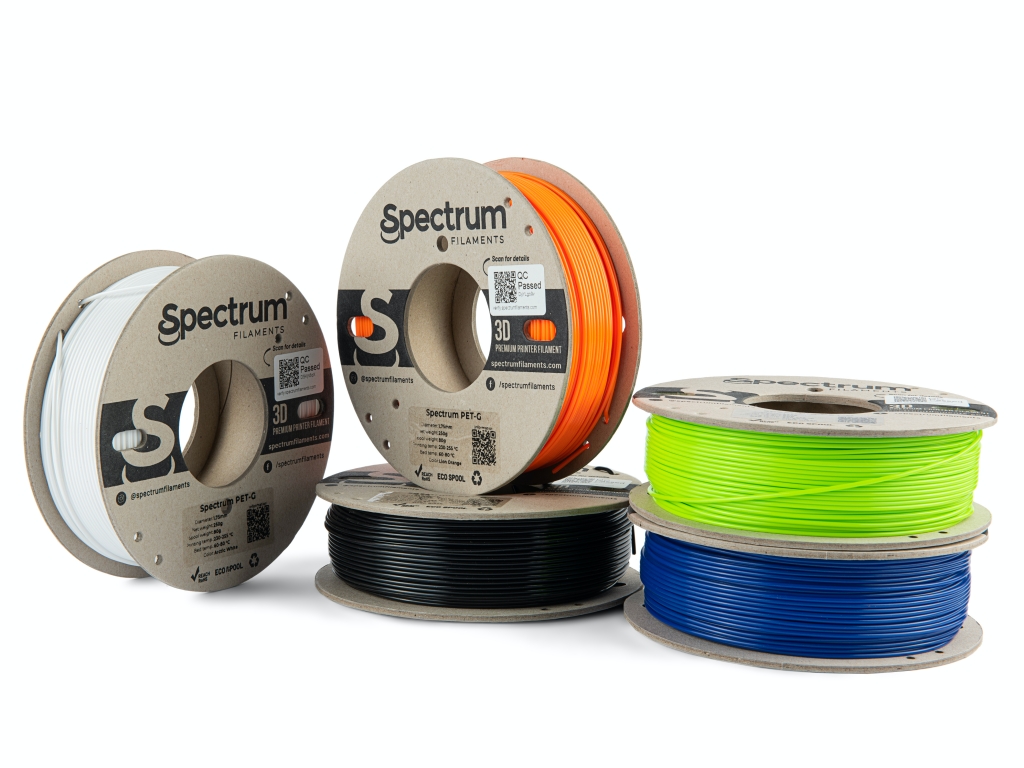
Most Common Types of 3D Printer Filaments and Their Properties
Choosing the right filament starts with understanding the wide range of options. Below is a detailed breakdown of popular filaments:
PLA (Polylactic Acid)
PLA is the most widely used and beginner-friendly filament. It's made from renewable resources like cornstarch or sugarcane.
- Print Temperature: 180–220°C
- Bed Temperature: Optional (20–60°C)
- Strengths: Biodegradable, low warping, no toxic fumes, prints well without heated bed, one of the easiest plastic to process
- Limitations: Brittle, not suitable for high-heat environments
- Ideal Use Cases: Prototypes, figurines, educational models, non-functional parts
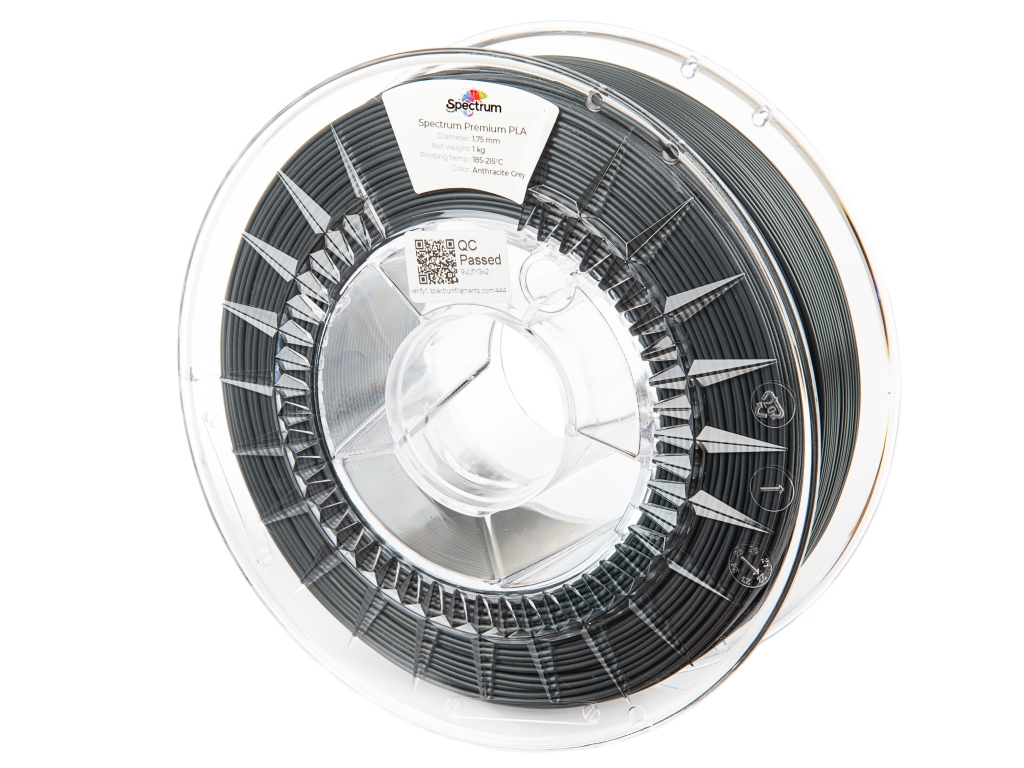
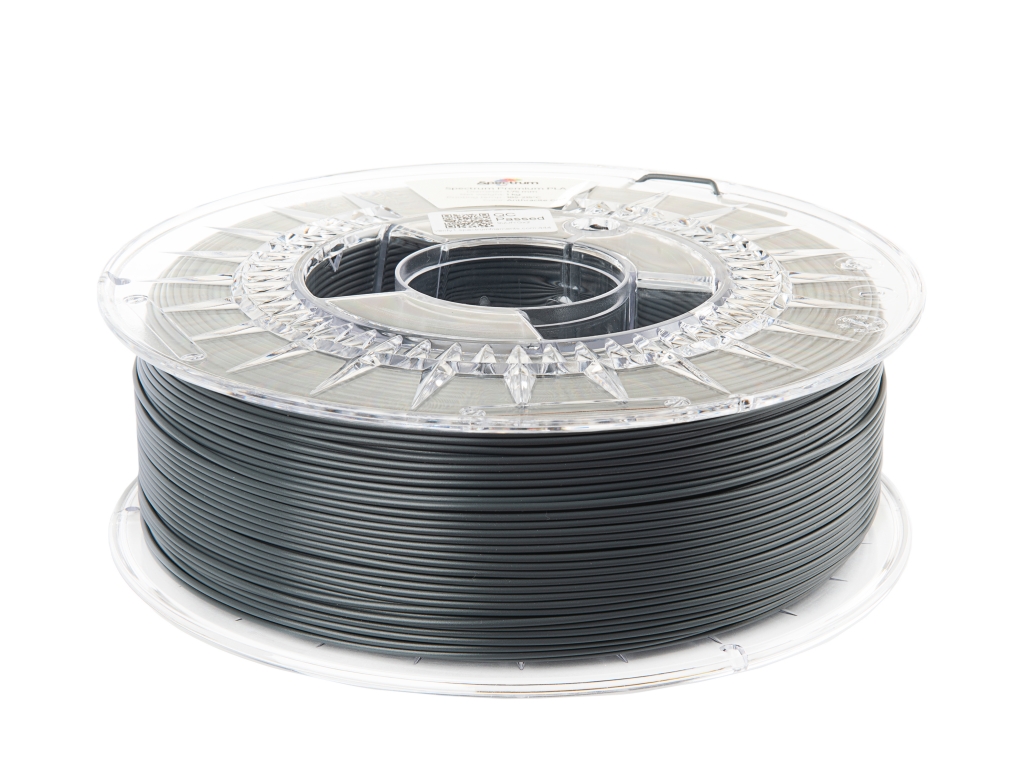
To check the available PLA Filaments in our online store, click the link : https://shop.spectrumfilaments.com/eng_m_Our-offer_Materials_PLA-2617.html
ABS (Acrylonitrile Butadiene Styrene)
ABS is known for strength and durability. It’s used in everyday products like LEGO bricks and automotive parts.
- Print Temperature: 220–250°C
- Bed Temperature: 90–110°C
- Strengths: Tough, impact-resistant, better heat resistance than PLA
- Limitations: Warping, requires heated bed and good ventilation (emits fumes)
- Ideal Use Cases: Enclosures, handles, mechanical components
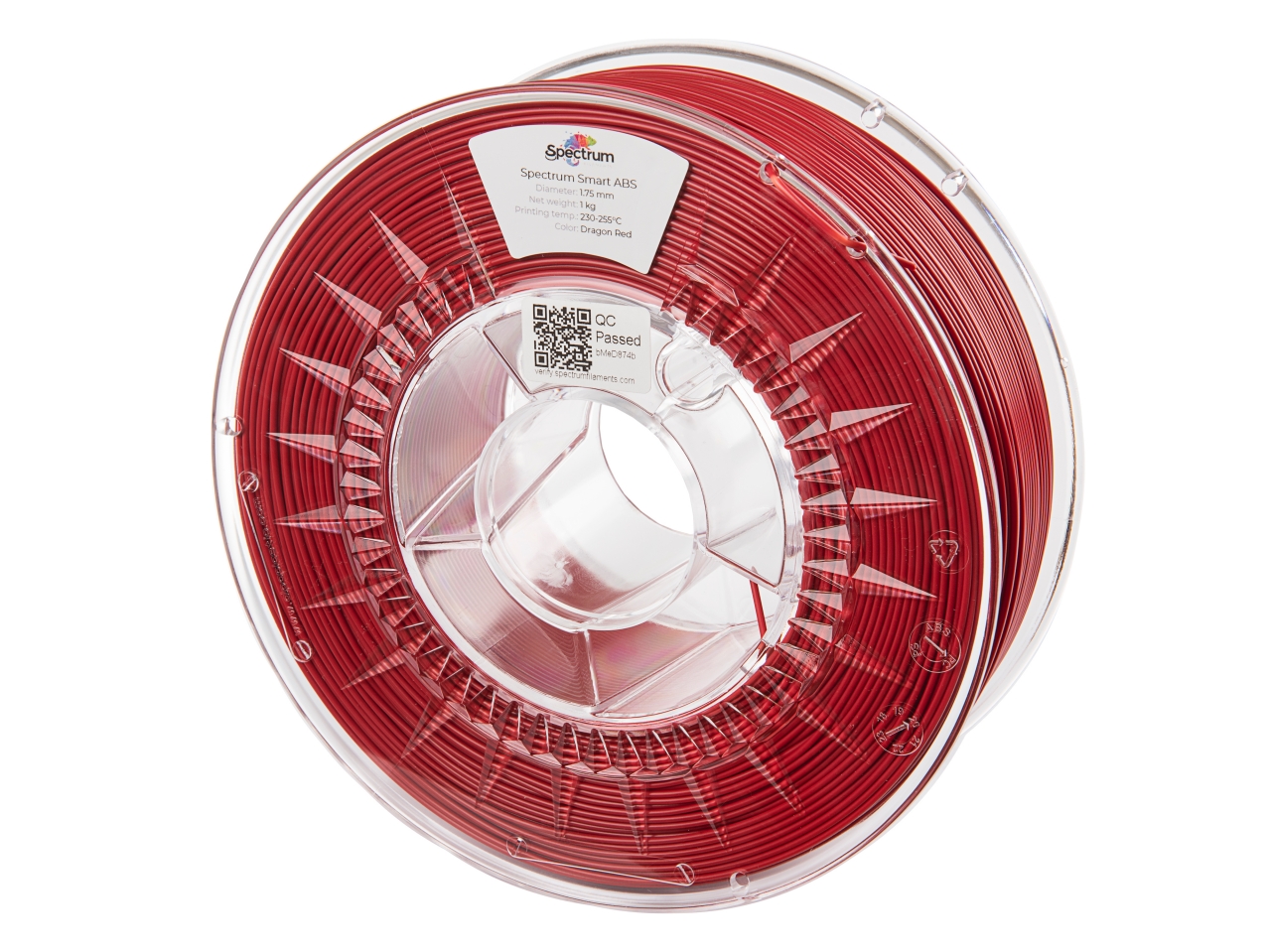
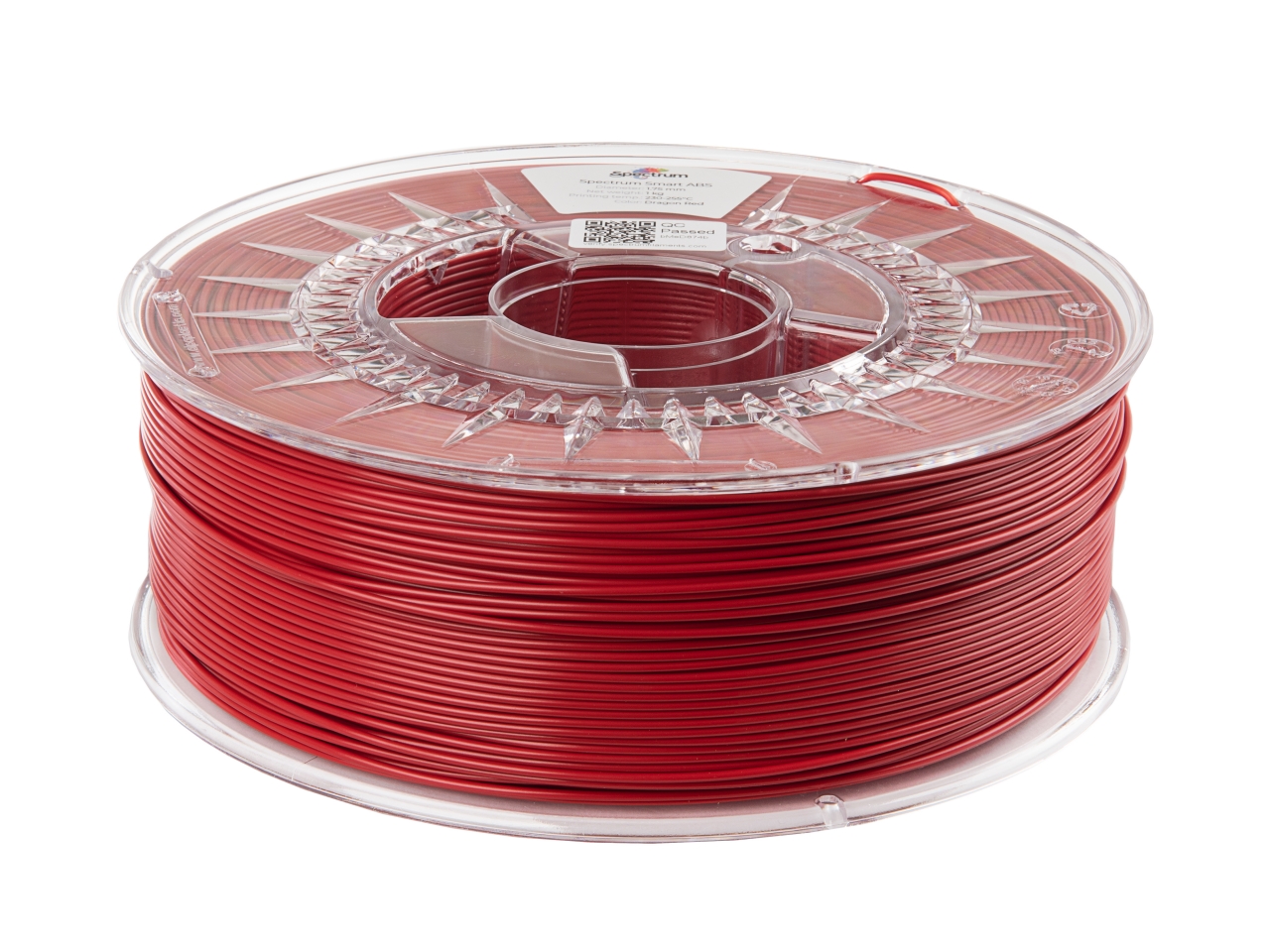
To check the available ABS Filaments in our online store, click the link : https://shop.spectrumfilaments.com/eng_m_Our-offer_Materials_ABS-2621.html
PETG (Polyethylene Terephthalate Glycol)
PETG combines ease of use with mechanical strength and is gaining popularity for functional parts.
- Print Temperature: 220–250°C
- Bed Temperature: 70–90°C
- Strengths: Durable, chemical-resistant, semi-flexible, low shrinkage
- Limitations: Stringing, requires dry storage
- Ideal Use Cases: Water bottles, mechanical parts, containers, jigs and fixtures
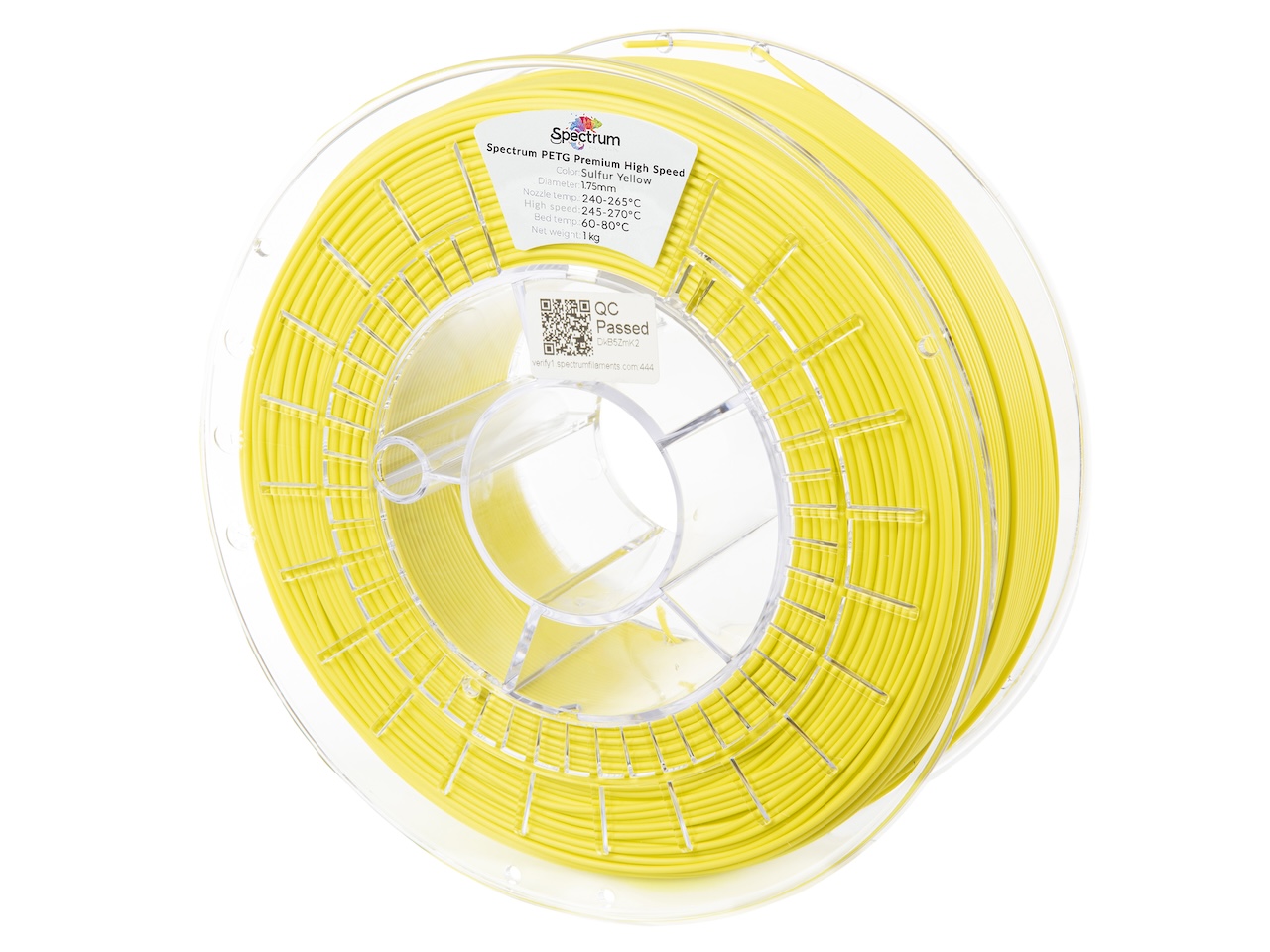
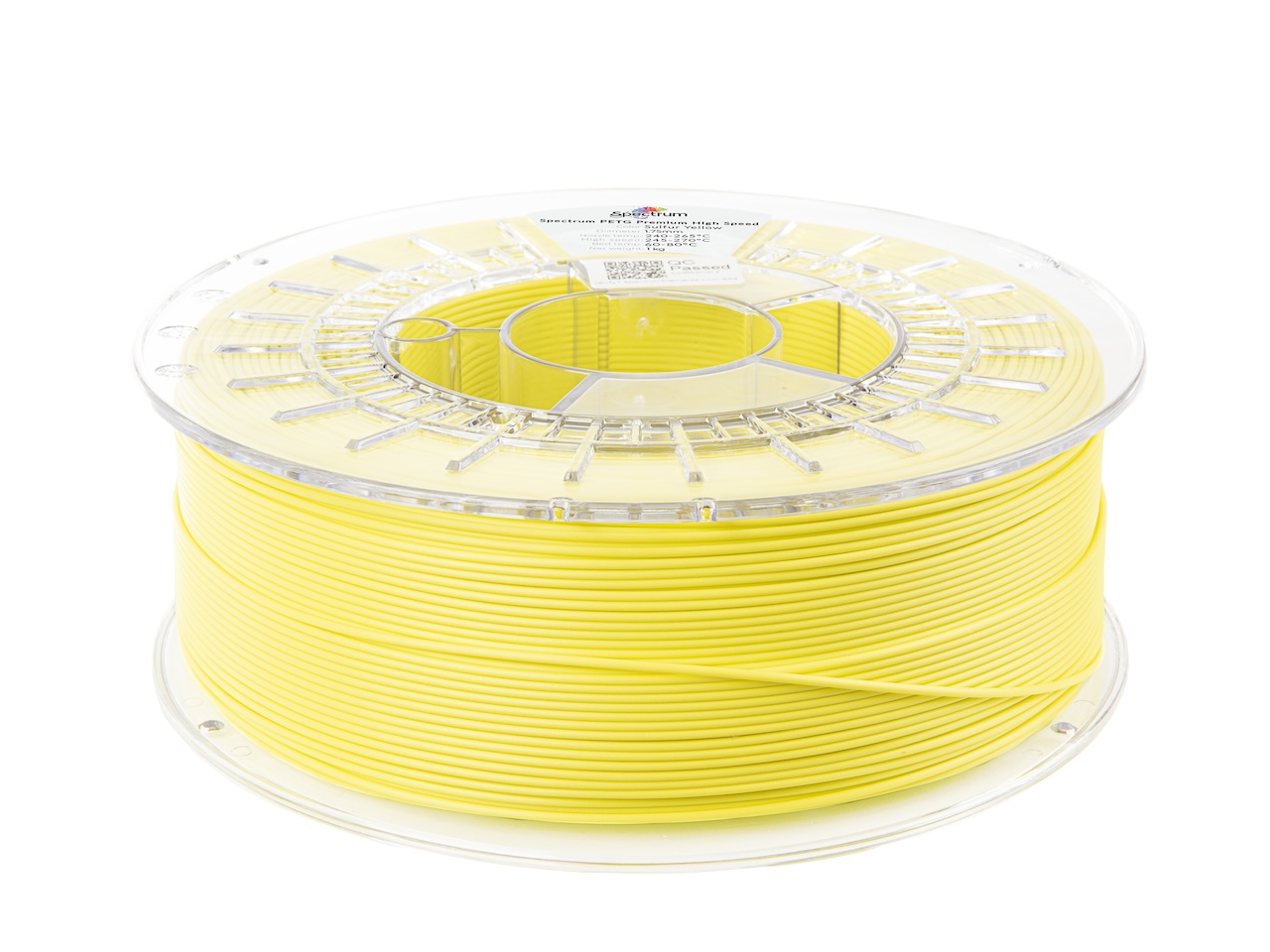
To check the available PETG Filaments in our online store, click the link : https://shop.spectrumfilaments.com/eng_m_Our-offer_Materials_PETG-2619.html
TPU (Thermoplastic Polyurethane)
TPU is a flexible material that feels like rubber, suitable for prints that need to bend or stretch.
- Print Temperature: 210–240°C
- Bed Temperature: 30–60°C
- Strengths: Flexible, abrasion-resistant, elastic
- Limitations: Slower print speeds, difficult feeding in some printers
- Ideal Use Cases: Phone cases, gaskets, footwear, seals, toys
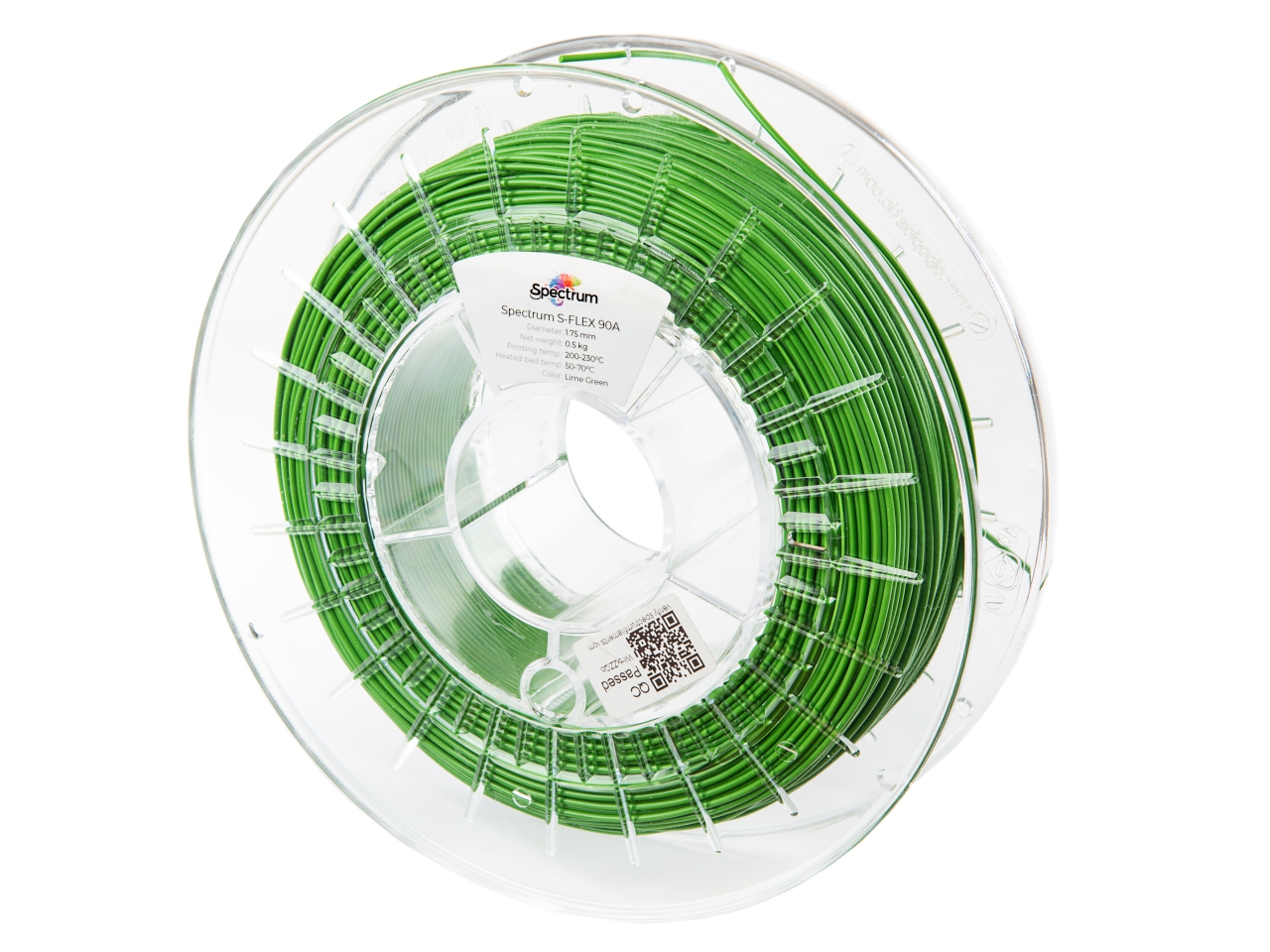
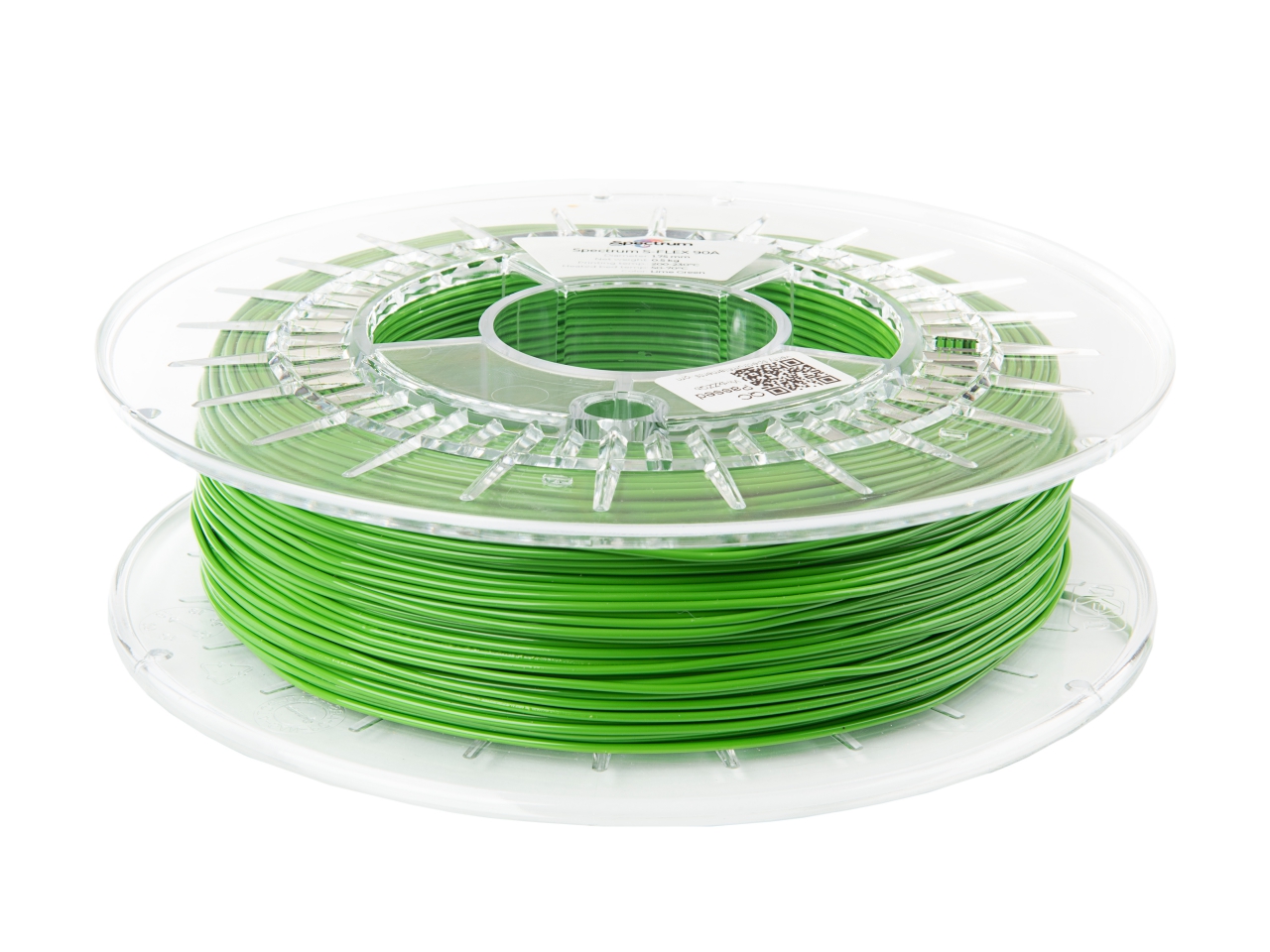
To check the available TPU Filaments in our online store, click the link : https://shop.spectrumfilaments.com/eng_m_Our-offer_Materials_FLEX-2624.html
Nylon (Polyamide)
Nylon is a strong and flexible engineering-grade filament with excellent wear and chemical resistance.
- Print Temperature: 240–270°C
- Bed Temperature: 70–100°C
- Strengths: High impact resistance, flexible under stress, wear-resistant
- Limitations: Highly hygroscopic, prone to warping
- Ideal Use Cases: Gears, functional hinges, mechanical parts
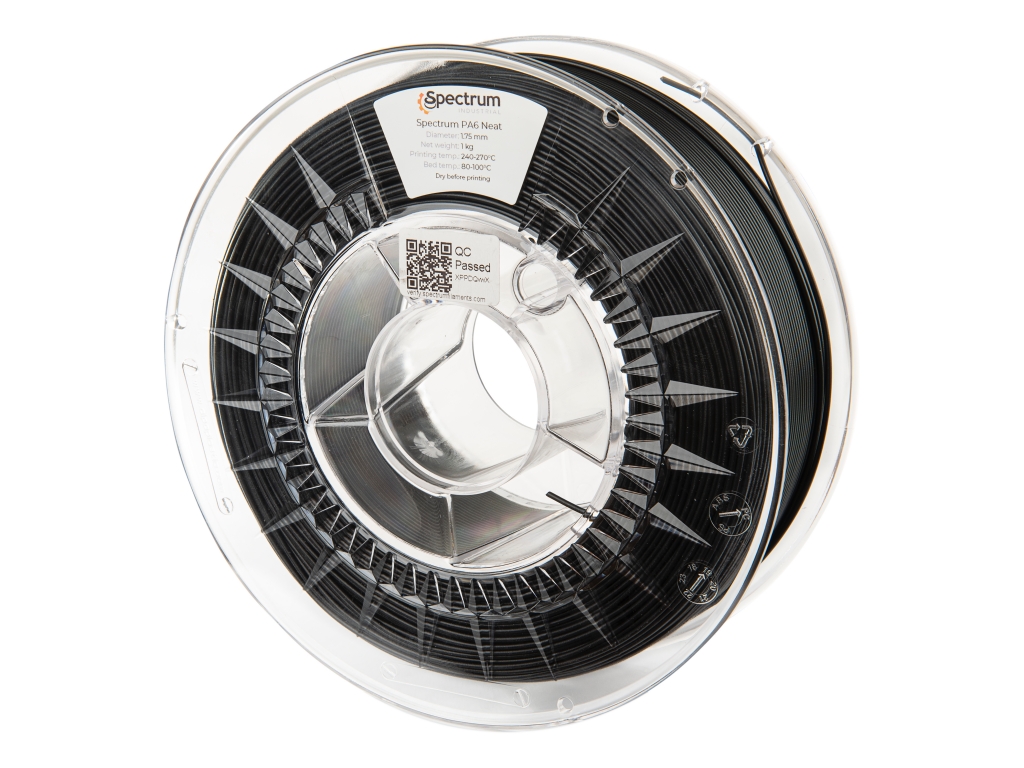
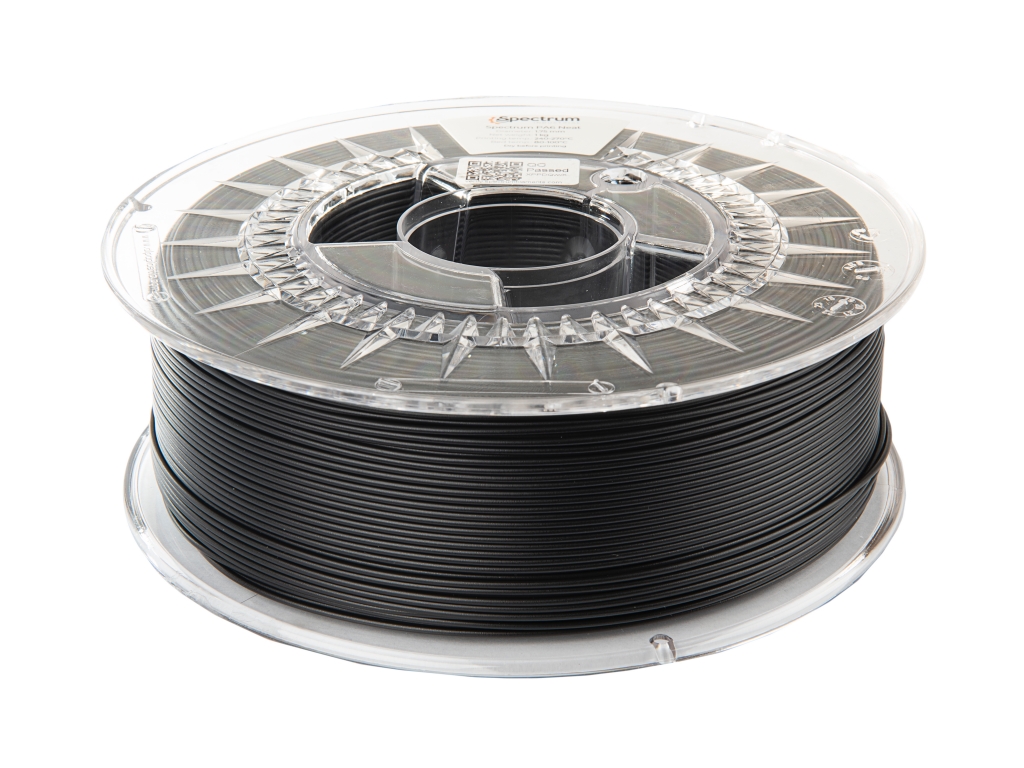
To check the available PA Filaments in our online store, click the link : https://shop.spectrumfilaments.com/eng_m_Our-offer_Materials_PA-2627.html
ASA (Acrylonitrile Styrene Acrylate)
A weather-resistant alternative to ABS, ASA maintains strength while resisting UV degradation.
- Print Temperature: 230–250°C
- Bed Temperature: 90–110°C
- Strengths: UV- and weather-resistant, durable
- Limitations: Requires enclosure, emits fumes
- Ideal Use Cases: Outdoor parts, signage, automotive covers
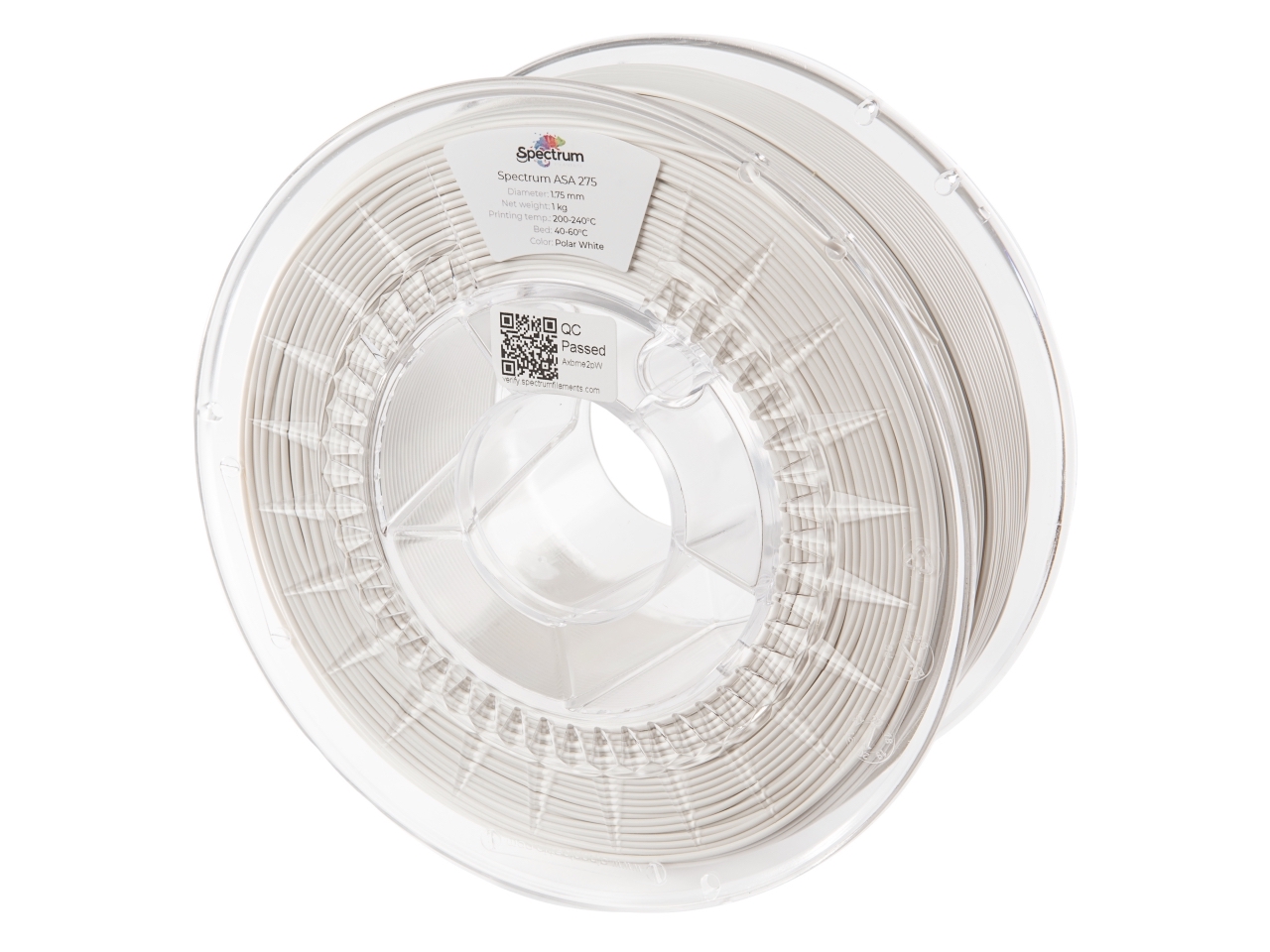
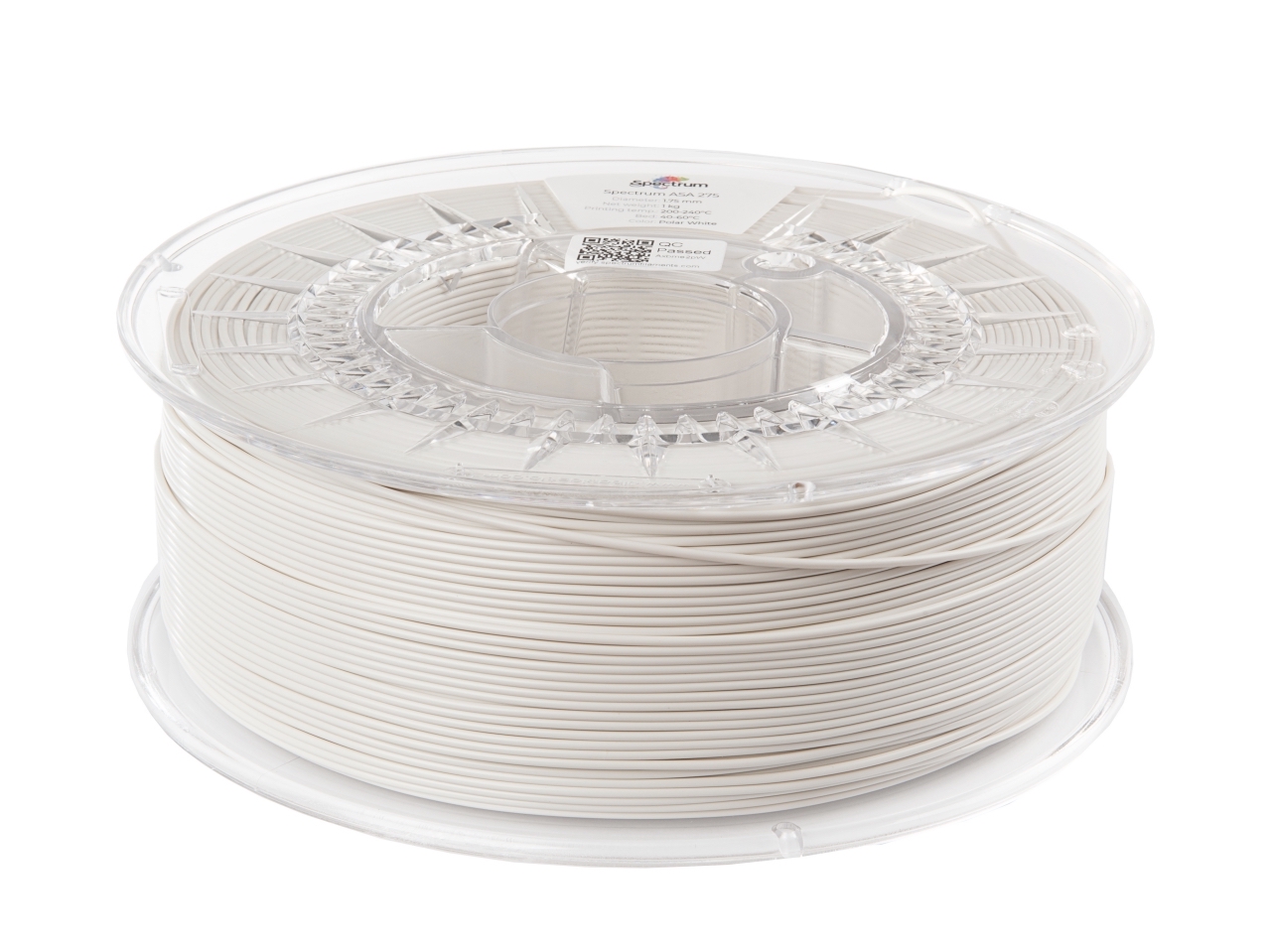
To check the available ASA Filaments in our online store, click the link : https://shop.spectrumfilaments.com/eng_m_Our-offer_Materials_ASA-2622.html
Polycarbonate (PC)
PC is one of the strongest materials available to hobbyist 3D printers.
- Print Temperature: 260–310°C
- Bed Temperature: 90–120°C
- Strengths: High strength, heat resistance, impact resistance
- Limitations: Warps easily, requires high-end printer with enclosed chamber
- Ideal Use Cases: Industrial-grade parts, electrical housings, molds
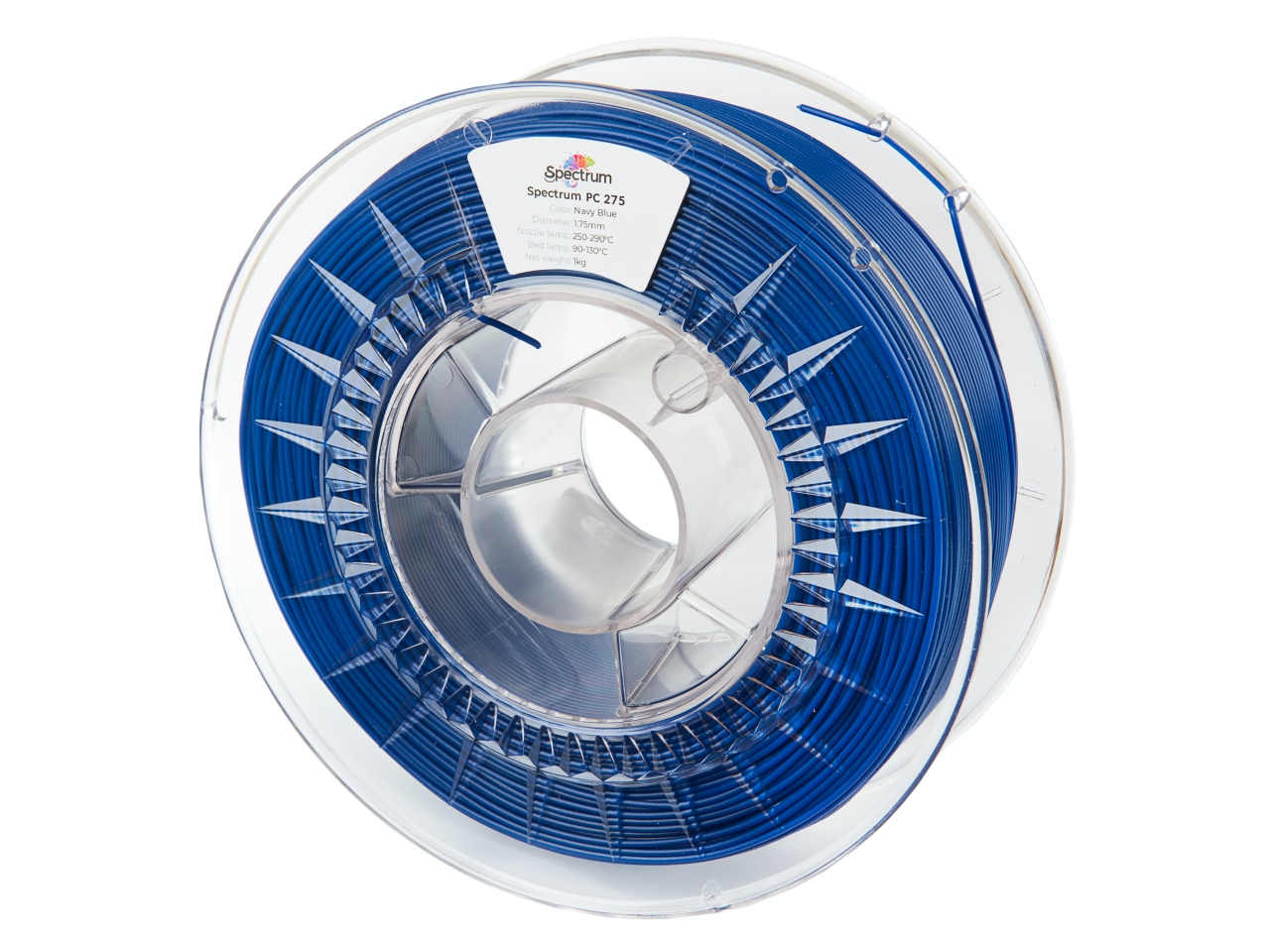
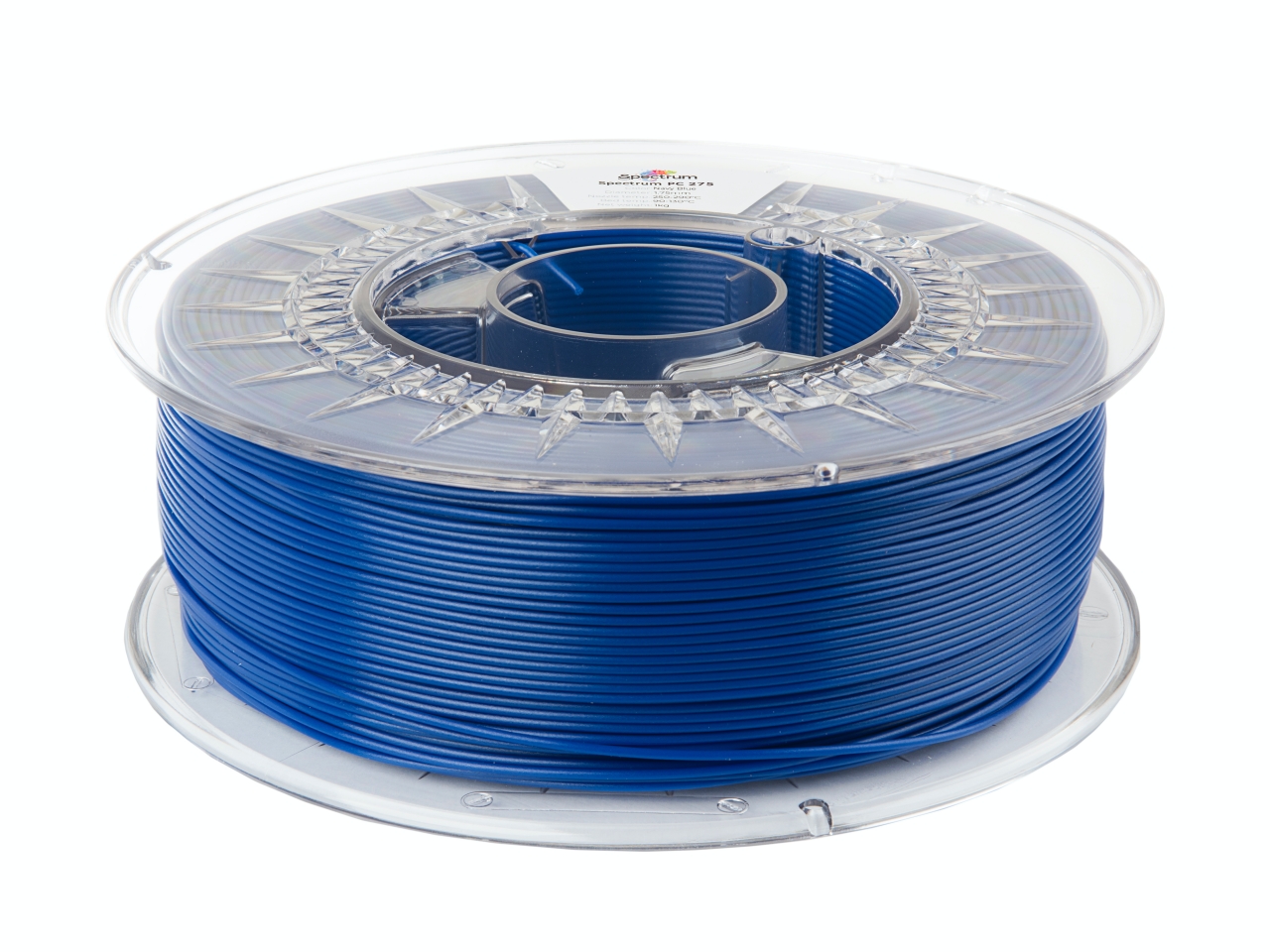
To check the available PC Filaments in our online store, click the link : https://shop.spectrumfilaments.com/eng_m_Our-offer_Materials_PC-2629.html
Specialty and Composite Filaments
As the 3D printing industry matures, specialty filaments have emerged for artistic, functional, and niche purposes:
- Wood-Filled: Blended with PLA and wood particles; emits wood-like scent and finish
- Metal-Filled: Contains bronze, copper, or stainless particles for metallic effects
- Carbon Fiber Reinforced: Offers strength and stiffness with a lightweight structure
- Glow-in-the-Dark: Ideal for toys, decorations, and artistic projects
- Conductive Filaments: Enable simple circuits and touch-sensitive devices
Take Note: These composites often require hardened steel nozzles due to abrasive particles.
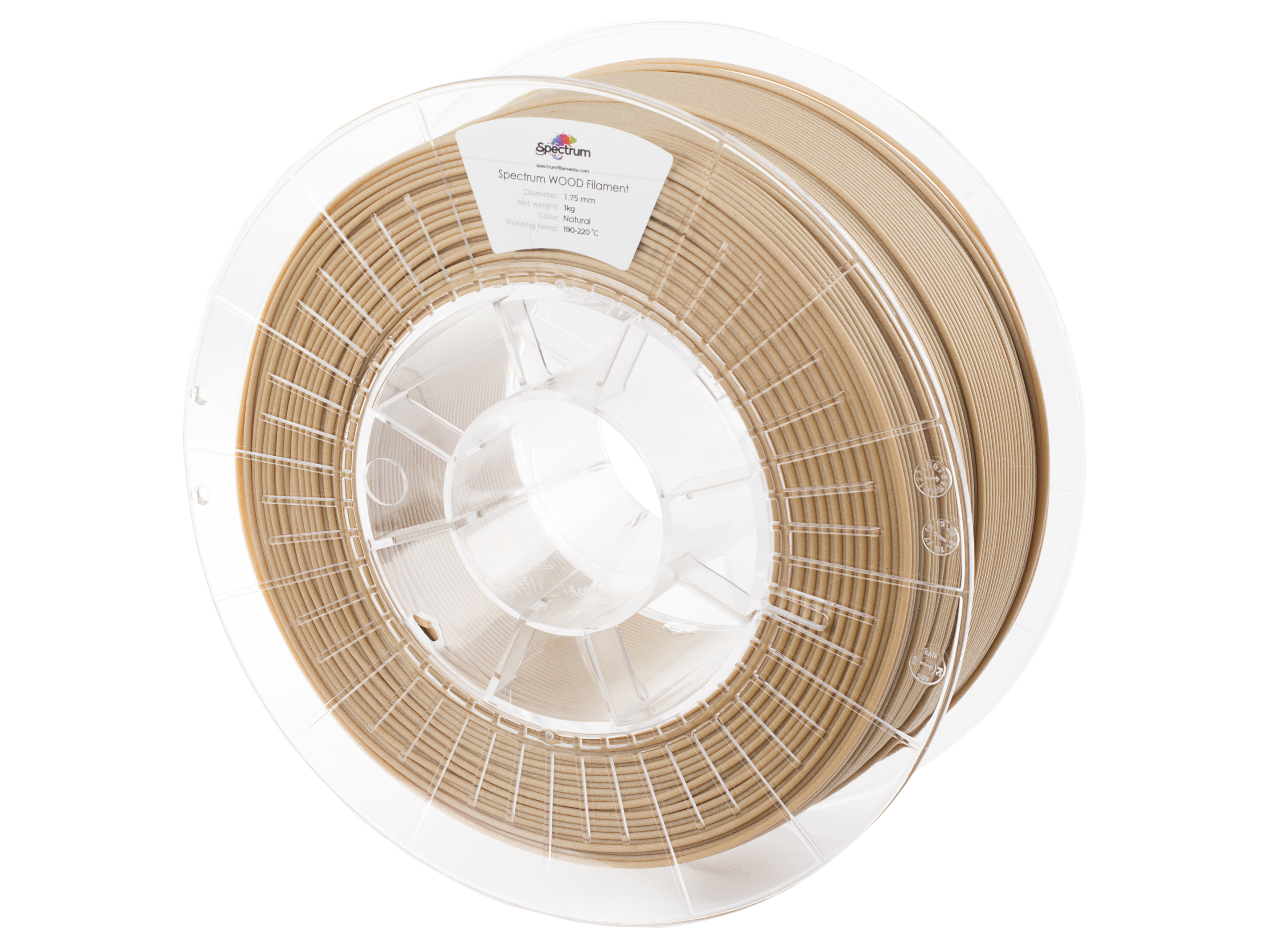 |
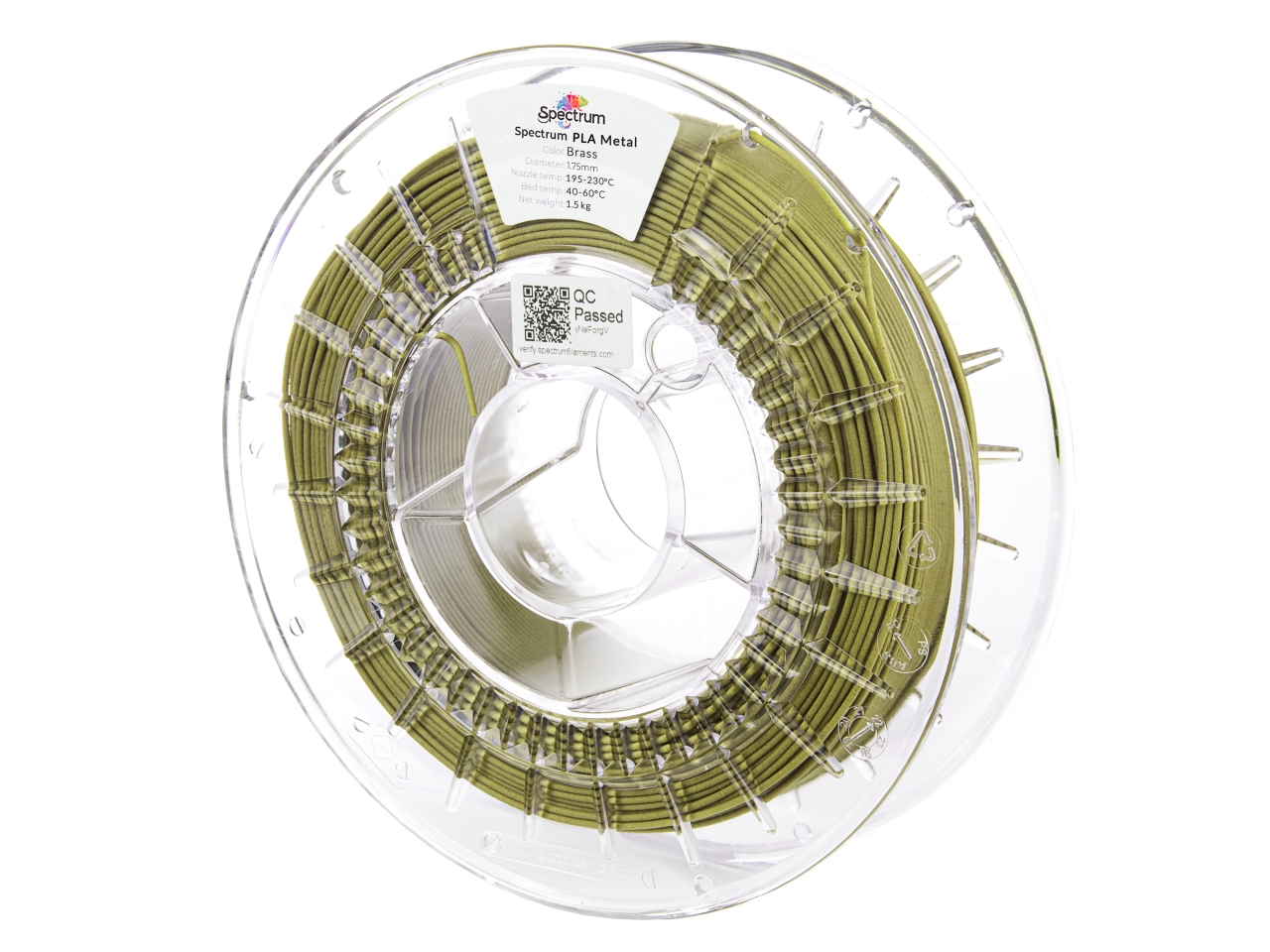 |
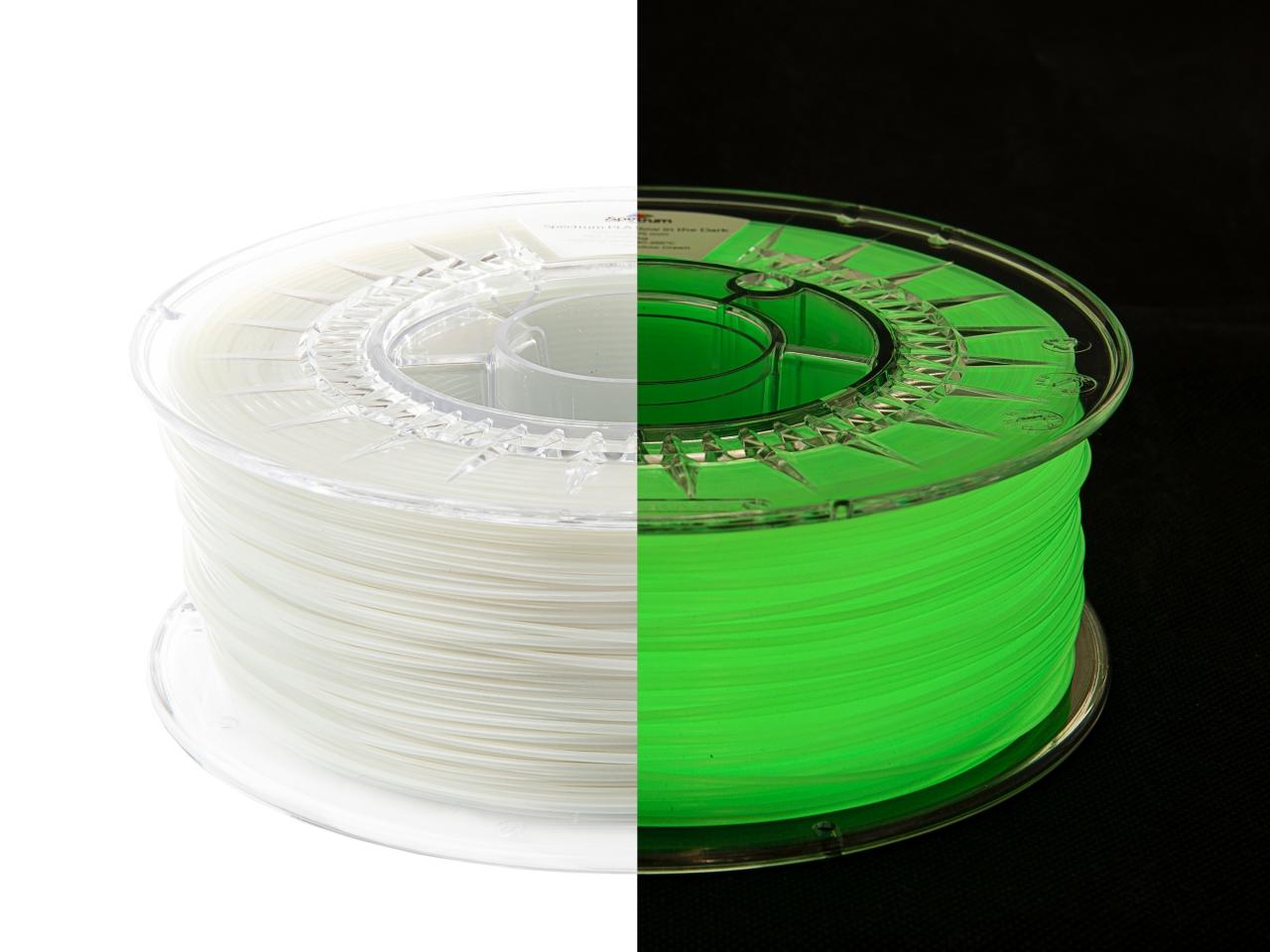 |
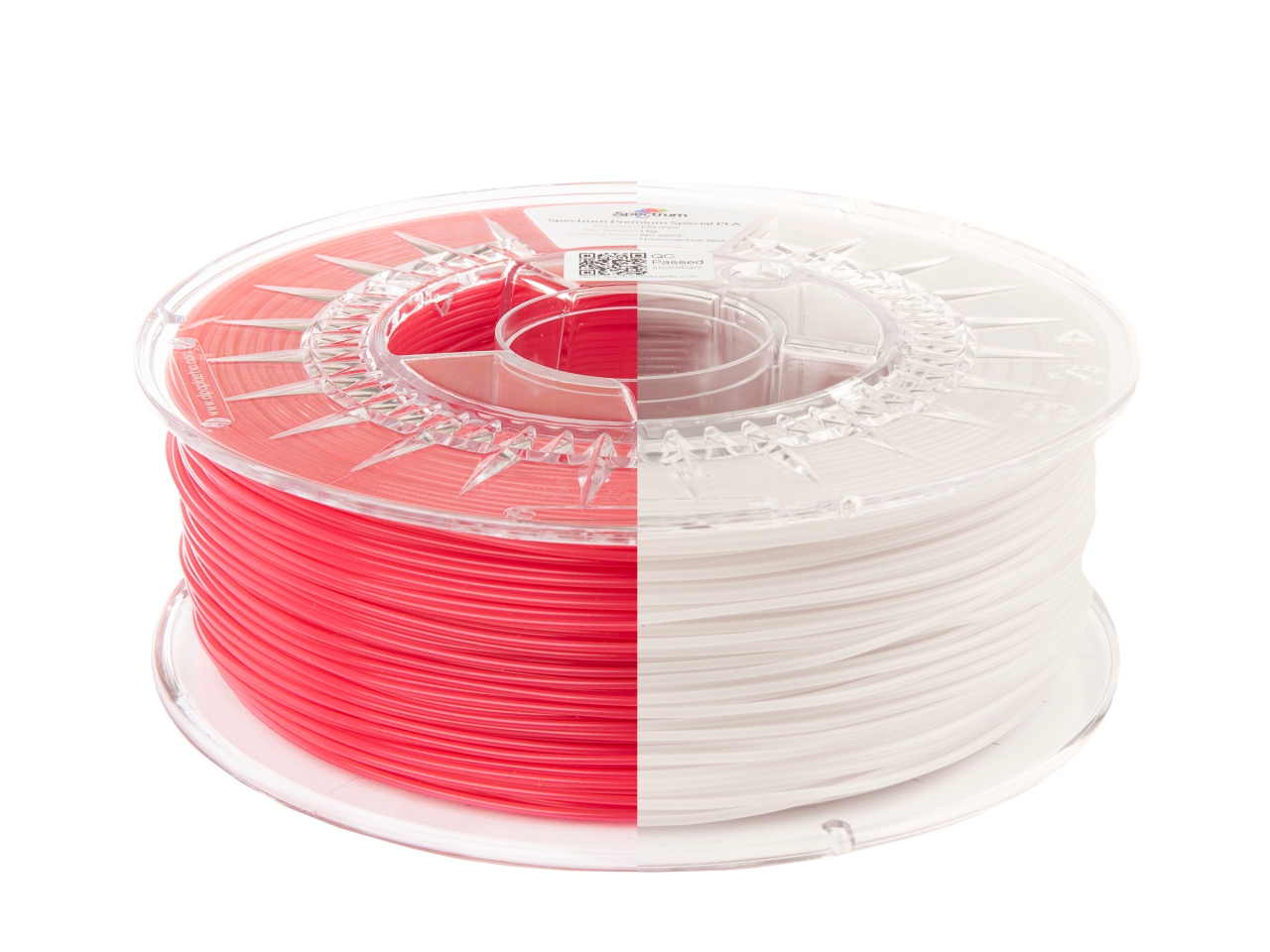 |
Click this link to browse all our available varieties of special filaments: https://shop.spectrumfilaments.com/eng_m_Our-offer_Materials-2616.html
How to Choose the Right Filament
Before buying filament, ask these questions:
- What is the part’s function?
- If it’s decorative, PLA may suffice.
- If it’s load-bearing or functional, consider PETG, Nylon, or PC.
- What environmental factors will it face?
- Outdoor exposure? Choose ASA or PETG.
- High-temperature environments? Use PC or ABS.
- What equipment do I have?
- A heated bed and enclosure allow for ABS and Nylon.
- Without these, stick to PLA or PETG.
- What is my skill level?
- Beginners should start with PLA or PETG.
Storage and Maintenance Tips
Proper filament storage extends material lifespan and ensures consistent print quality. Follow these best practices:
- Keep filament dry – Moisture causes bubbles, poor adhesion, and weak prints. Store spools in airtight bags or containers with desiccants.
- Use filament dryers for materials like Nylon and TPU.
- Label spools with purchase dates and material types.
- Avoid exposure to sunlight – UV rays degrade some plastics.
Print Settings and Calibration
Achieving optimal print quality depends on fine-tuning settings:
- Nozzle Temperature – Set according to filament specs. Too hot causes oozing; too cool leads to poor layer adhesion.
- Bed Adhesion – Use glue stick, PEI sheets, or tape as needed.
- Print Speed – Flexible and high-temp materials benefit from slower speeds.
- Cooling – PLA likes more cooling; ABS needs less to prevent warping.
- Retraction – Adjust to reduce stringing, especially in PETG and TPU.
Regular maintenance—such as cleaning nozzles and lubricating moving parts—ensures smoother printing experiences.
Environmental Impact and Sustainability
The 3D printing community is increasingly aware of sustainability. Some important notes:
- PLA is biodegradable, but only in industrial composting facilities.
- Recycled filaments are emerging as eco-conscious alternatives.
- Waste reduction is possible by optimizing print orientation and avoiding support material.
Efforts like filament recycling systems and spool-less packaging are gaining traction in responsible 3D printing practices.
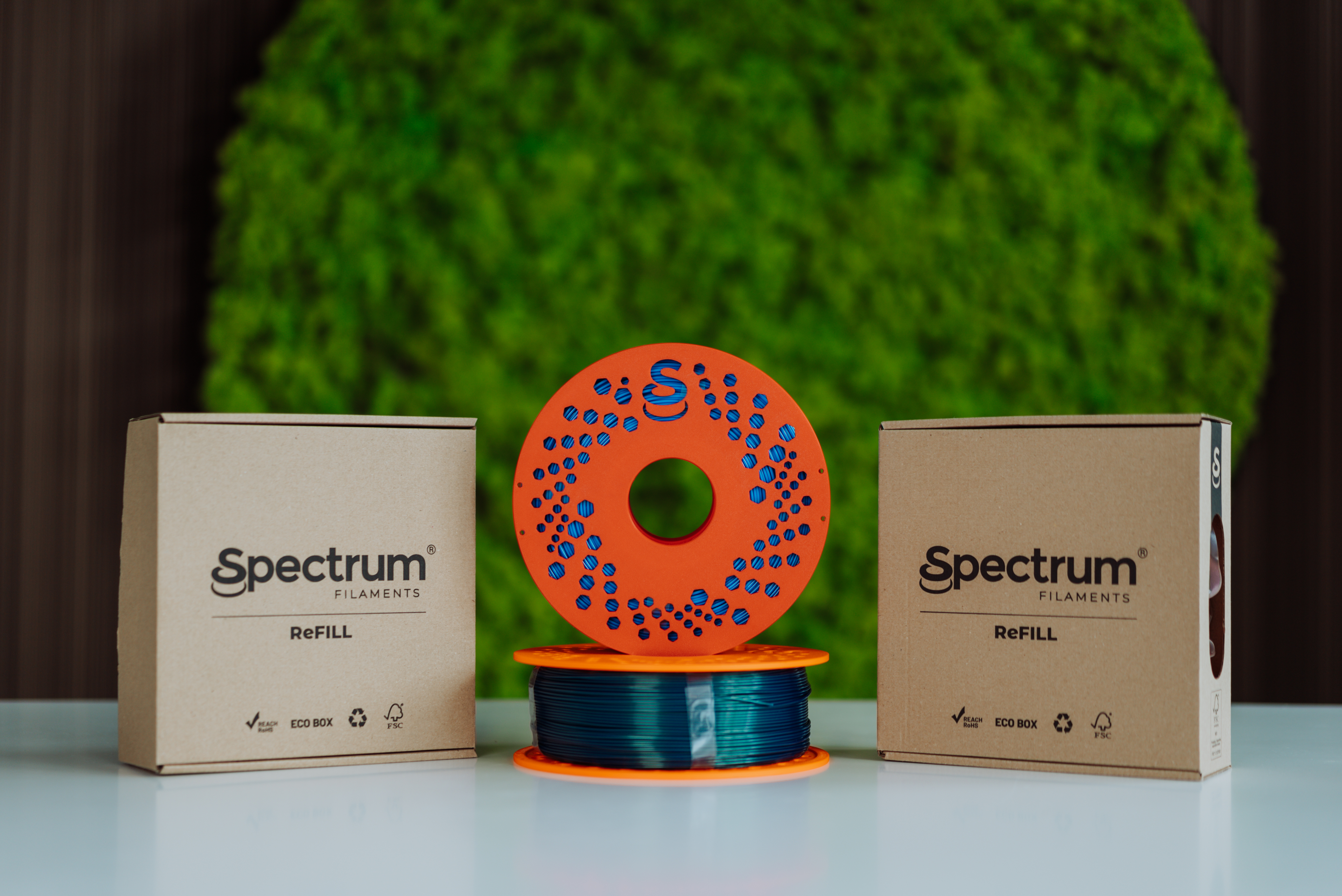
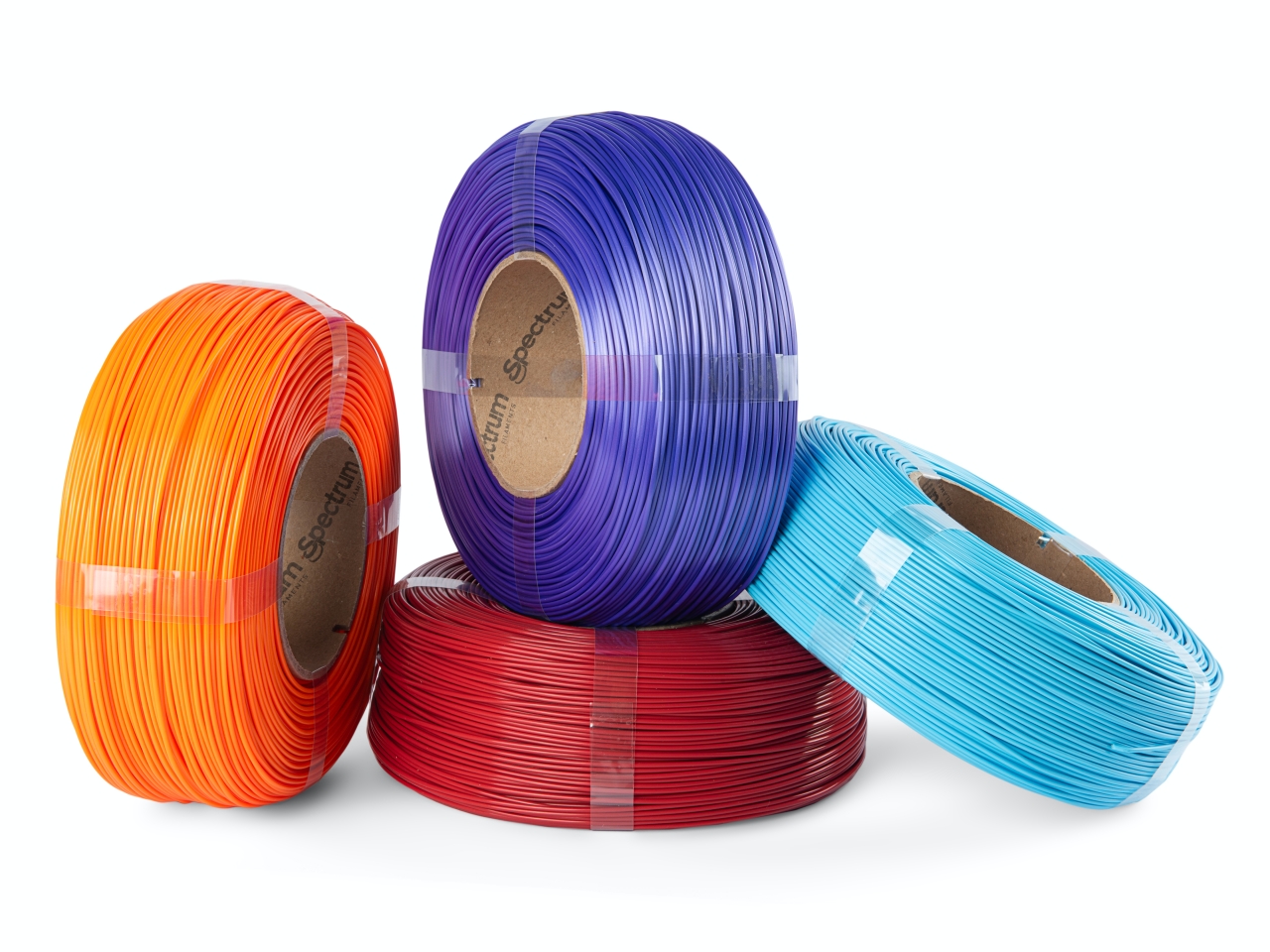
Conclusion
Filament is more than just feedstock for your 3D printer—it's a key component that defines the success, strength, and functionality of your final product. From user-friendly PLA to engineering-grade PC and Nylon, the options are vast. With growing innovation in composites, recyclables, and flexible materials, the filament landscape is expanding like never before.
Whether you're just starting out or printing complex functional parts, understanding filament behavior, compatibility, and usage is essential. With proper selection, storage, and handling, your 3D prints will not only meet but exceed expectations.
Ready to start printing?
Invest in high-quality filament, experiment with new materials, and always keep learning—the possibilities are only limited by your imagination.